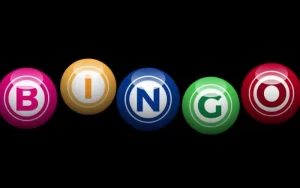The hockey game stands as one of the most exhilarating and physically demanding sports in the world. Whether played on ice, grass, or indoors, hockey has captivated audiences with its blend of speed, skill, teamwork, and unrelenting action. From Olympic arenas to local rinks and fields, the game of hockey has a rich history and a global fanbase.
Let’s dive into what makes hockey game such a thrilling sport, its various formats, how it’s played, and why it’s loved across continents.
A Brief History of Hockey Game
Hockey Game has ancient roots, with games involving curved sticks and balls dating back thousands of years. Ancient civilizations like the Greeks, Romans, and Persians played stick-and-ball games that bore similarities to modern hockey. However, the modern form of hockey we know today evolved in two primary branches:
- Field Hockey: Developed in 19th-century England, this version became especially popular in countries like India, Pakistan, Australia, and the Netherlands.
- Ice Hockey: Originating in Canada in the late 19th century, ice hockey became the most popular form in North America and parts of Europe.
Over the decades, variations such as indoor hockey, roller hockey, and street hockey have emerged, broadening the sport’s reach and appeal.
Types of Hockey Games
- Field Hockey
Played on grass or turf fields, this game features 11 players per side. It’s known for its strategic passing, stick handling, and goal-scoring finesse. Field hockey is an Olympic sport and is especially popular in India, the UK, Australia, and Germany. - Ice Hockey
Played on a rink with six players per team, ice hockey is incredibly fast-paced. Players skate on ice while using sticks to shoot a puck into the opponent’s net. The NHL (National Hockey League) is the premier ice hockey league globally. - Indoor Hockey
A modified version of field hockey game, this is played indoors with six players per side. The court is smaller, and the rules slightly differ to accommodate the faster, more compact game style. - Roller Hockey and Street Hockey
These casual or competitive versions are played on skates (roller or inline) or even without skates on streets or courts. They’re accessible and popular in urban areas.
Basic Rules of Hockey

While rules differ slightly between formats, the core objective remains the same: score goals by getting the ball or puck into the opposing team’s net.
Common Elements:
- Teams: Typically consist of 6 to 11 players, depending on the version.
- Equipment: Sticks are used to control the ball or puck; players wear protective gear.
- Duration: Matches are usually played in halves (field hockey) or three periods (ice hockey).
- Scoring: A point is awarded each time the ball/puck crosses the goal line.
- Fouls: High sticks, body checking (in non-contact versions), and obstruction lead to penalties or free hits.
Key Skills in Hockey
- Stick Handling
Controlling the puck or ball smoothly is crucial for advancing play and creating scoring opportunities. - Passing and Shooting
Accurate passes and powerful or well-placed shots determine a team’s offensive success. - Speed and Agility
Hockey demands quick movements, whether on skates or feet. Players must change direction swiftly and maintain balance. - Teamwork and Strategy
Like all great sports, hockey game requires communication, positioning, and coordinated play to dominate the field or rink.
Global Popularity and Cultural Impact
- India: Field hockey is deeply embedded in Indian sports culture. The nation has won multiple Olympic gold medals and continues to produce world-class talent.
- Canada: Ice hockey is more than a sport—it’s a national identity. The NHL originated here, and hockey legends like Wayne Gretzky are household names.
- Europe: Nations like the Netherlands, Germany, and the UK have strong field and ice hockey traditions.
- USA: The country boasts a powerful presence in international ice hockey, with growing popularity in youth and women’s leagues.
International competitions like the Olympics, FIH Hockey World Cup, and IIHF Ice Hockey World Championship draw massive global audiences.
Why People Love Hockey Games
- Non-Stop Action: Unlike some sports, hockey game is constantly moving. There’s little downtime, keeping spectators on the edge of their seats.
- Tactical Depth: Strategy plays a huge role, from set plays to power plays and penalty kills.
- Physical Intensity: The sport is both graceful and gritty, demanding physical and mental toughness.
- Community and Pride: Whether it’s cheering for a hometown club or a national team, hockey builds strong fan communities.
Conclusion
The India hockey game, in all its forms, continues to captivate millions with its dynamic pace, technical skill, and heart-pounding excitement. From packed stadiums in Canada to sunlit fields in India, the passion for hockey is universal. As the sport evolves and reaches more corners of the globe, its legacy grows stronger with each game played.
Whether you’re lacing up skates or picking up a stick for the first time, one thing is certain: hockey is more than a game—it’s a way of life.








